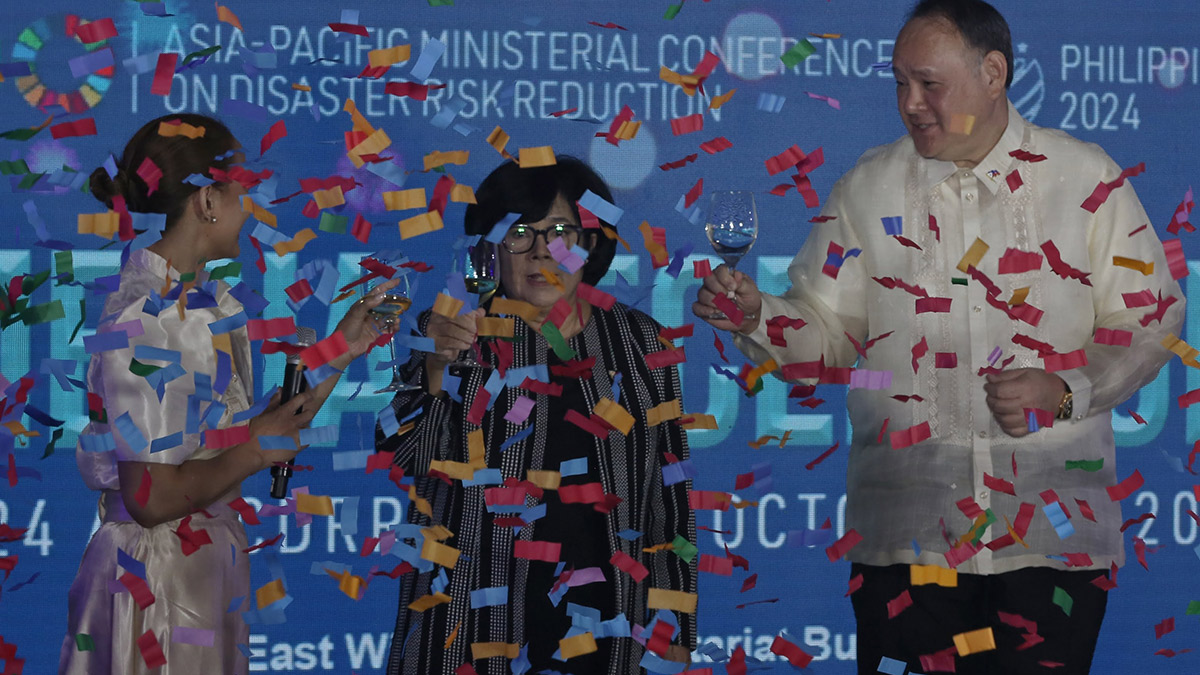PH a ‘lighthouse’ in disaster risk reduction, says top UN official

FOR THE ENVIRONMENT Environment Secretary Maria Antonia Yulo-Loyzaga (center), joined by Defense Secretary Gilberto Teodoro Jr. and Presidential Communications Office Senior Undersecretary Emerald Ridao, leads a toast to open the Asia-Pacific Ministerial Conference on Disaster Risk Reduction on Monday. —Richard A. Reyes
MANILA, Philippines — Disaster risk reduction efforts in the Philippines serve as “a lighthouse to the rest of the [Asia-Pacific] region and the world,” a United Nations official said on the eve of a major environmental conference today in Manila.
During Monday’s launching of the Asia-Pacific Ministerial Conference on Disaster Risk Reduction, Kamal Kishore, chief of the UN Office for Disaster Risk Reduction (UNDRR), highlighted three key features in the Philippines’ approach to disaster risk mitigation that, according to him, make the country “a very unique, very inspiring host” for the event.
“Your approach is marked by a people-centered focus—talking about what really needs to happen on the ground. How people experience the effects of disaster risk reduction,” said Kishore, who is also a special representative of the UN secretary general for disaster risk reduction.
READ: PH to open Asia-Pacific disaster meet Monday; gun ban ordered in NCR
He also noted the country’s “really vibrant civil society,” which he said was “really inspiring and other countries might like to draw on [it].”
Article continues after this advertisementKishore further praised the Philippines on how it “brings different parts of the government together,” adding that “this is not something that you see in many different countries.”
Article continues after this advertisementWith the country serving as conference host, Kishore said he “can’t think of a better place to organize” the event, especially with the completion of the Sendai Framework in five years.
He was referring to a 2015 agreement among UN member states following a conference in the Japanese city of Sendai which targets a “substantial reduction of disaster risk and losses in lives, livelihoods and health,” as the UN’s disaster risk reduction agency said at that time.
Actionable commitments
The weeklong conference in Manila, which began on Monday, brings together governments as well as intergovernmental, international, national and civil society groups, the private sector, the academe, the science community and other stakeholders.
The event, which is held every two years, aims to draw from the expertise of more than 3,000 high-level international and local delegates.
It will also provide an important opportunity to review risk reduction efforts, share innovative solutions, and make actionable commitments to accelerate disaster risk reduction by 2030 in the Asia-Pacific—deemed the world’s most disaster-prone region.
The country’s hosting of this event, which is held at the Philippine International Convention Center, is in partnership with UNDRR.
Malacañang suspended government work and classes at all levels in the cities of Manila and Pasay yesterday and today to give way to the opening of the conference. —with a report from Inquirer Research